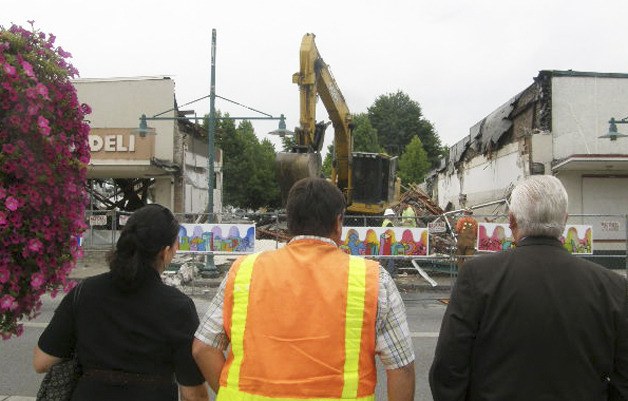In 1979, when I came to Auburn, there was an economic redevelopment effort under way in the downtown. I was very impressed because it seemed that all of the important people, the bankers and owners of the city, were working together.
The effort began because the downtown was deteriorating. Most of the major retail stores had already closed, leaving only Rottle’s, JC Penney, Nelson’s Jewelry, Cavanaugh Hardware and, as was said in the newspapers at that time, a whole row of deteriorating bars and antique stores. Its failure led to an ongoing sense of loss that continued through the next two decades.
Another effort, led by the Auburn-Area Chamber of Commerce and chaired by Lynn Norman, the owner of the Country Spice store in downtown Auburn at the time, began when JC Penney left town a decade later. Even with that mighty effort, it failed as well, and more stores closed.
In the late 1980s, after the closing of JC Penney and Massey’s grocery store, remaining buildings were slowly decaying before our eyes. Mayor Chuck Booth led an effort that included small and large businesses, the Chamber of Commerce, the Auburn Downtown Association, the Auburn School District and citizens. He called for a united effort to redevelop the downtown.
By 2001, the Downtown Development Committee had completed its work, and the City Council passed the 2001 Auburn Downtown Plan. In 2002, the work began, based on that city-wide approved plan.
The plan suggested that the City put together a block of land that developers might want to consider for new development. We went to the many absentee property owners and over a period of five years assembled properties to begin the process of putting that block of land together that could attract new development. Several developers came into town and purchased others.
The pioneering Cavanaugh family and a developer entered into a private agreement that failed. But at least they tried. In fact, the citizens of Auburn and the remaining businesses on Main Street owe a debt of gratitude to the Cavanaughs because they single-handedly kept a full block of businesses open on Main and Division during a difficult time. They kept their rents down well below market to allow several restaurants, a non-profit and a number of small businesses to stay open. Those businesses had to close or move when Cavanaugh’s effort started, but they were able to be there as long as they were because of that good family.
Another developer began to sell off holdings and, heeding the 2001 redevelopment plan, the City bought the holdings on the Crites-Huff block from that developer. The City bought the Sunbreak Café parking lot on the other side of the Crites-Huff building from the owners of the café to put together yet another block to develop.
With a total of six blocks available to develop, the work began. Last year, City-owned properties north of City Hall were redeveloped, and a new 42,000-square-foot, state-of-the-art cancer center stands there today. A 300-stall parking garage and, in a public-private partnership, a 92,000-square-foot retail space – the only major new construction project built to completion in the region in 2009 – also appeared. Auburn now has more than 200,000 square feet already completed.
The City went to the State of Washington and secured bonding for up to $7 million for downtown infrastructure, using a part of the state’s portion of the sales tax it would receive on future new business. In addition, the City asked for a grant from the Federal Economic Development Agency (EDA) for $3 million for the downtown development.
The EDA grant called for Auburn to designate downtown as an economically-blighted area for redevelopment. But the designation does not allow properties to be taken or condemned for economic development under that federal or state law. Your City has never condemned property for economic development. The City has been working with the state Attorney General’s office to prevent just that type of taking of property.
With the approval and funding of $10 million in state and federal grants, the next phase of work has begun, as the City Hall Plaza starts to define the new blocks to the south.
The Marvel building is coming down to create an extended plaza and downtown gathering space needed by our community and the development community as well. The Marvel business is now thriving in its new location on C Street Southwest.
With the renovation of the City Plaza, the extended plaza, which includes 21st century engineering, will be re-built into the promenade, with new infrastructure, pipes and a conduit that is necessary to prepare for new development.
The Auburn City Council has held firm to the downtown plan. New development must bridge old and new on Main Street so that neither is cut off from the other, but instead each connects and supports the other. The buildings must reflect the best architecture of our city. It plans for new retail businesses to support the rest of Main Street. It calls for mixed-use development and residential space above retail and commercial.
We have the strength for residential development because of the Transit Center, a regional hospital, downtown shopping and Safeway within walking distance right in the heart of a wonderful community with a great history and just as bright a future.
For 30 years, the people of Auburn have hoped and dreamed for a better tomorrow, and they know full well it is time for this change.
Reach Mayor Pete Lewis at plewis@auburnwa.gov.


